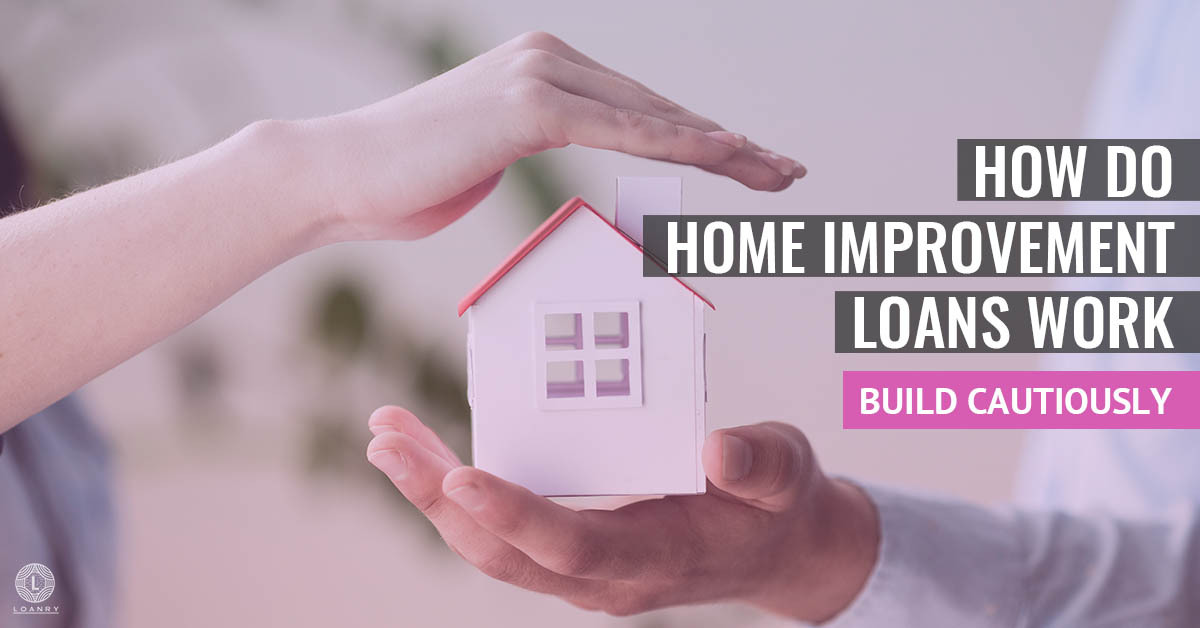How Do Home Renovation Loans Work?
Home renovation can breathe new life into a living space, making it more comfortable and valuable. But many homeowners find it hard to get financing for their plans to renovate the home. With savings that cannot cover renovation costs, home renovation loans can help bridge this gap. In this article, we will break down how such loans work, available options, and a few important dos and don’ts to secure the loan.
Understanding Home Renovation Loans

Home improvement loans are taken only for raising funds for home renovation work. Such loans may be secured and unsecured:
Secured Loans
These loans need collateral against which the loan is sanctioned, like your home. As such, they carry a lower interest rate as there is lesser risk involved in terms of a secured loan for a bank or a financier. However, failure to repay such a loan may involve losing your home.
Unsecured Loans
These do not require collateral hence less risky for people who borrow but are mostly paired with a higher interest rate. Loans, in general, are personal loans that you take to support renovations.
Kinds of Home Renovation Loans
Personal Loans
Personal loans are the most flexible when it comes to the usage of the money and are usually applied for when people have numerous home projects to be undertaken. Even though they usually carry a higher interest compared to the secured loans, this product is gaining popularity due to its ease of application and quick availability of cash.
Home Equity Loans
You can withdraw equity that you have tied up in a home by borrowing against its value. Normally they have lower rates of interest as the lending is secured on your home. Remember, however, that failure to service may actually result in loss of the home.
Home Equity Line of Credit, or HELOC
A HELOC functions like a home equity loan but grants an open line of credit as opposed to a single lump sum. This will make it easier to take money out and pay it back in little dribs and drabs, like more ongoing renovation projects. HELOCs are also mostly variable, so your payments may change over time, and there may be fees or stringent financial requirements.
Government Loans
This does have government-backed loans specifically for home renovations, such as FHA 203(k) or Fannie Mae HomeStyle loans. Options like these usually have looser eligibility requirements, so it is a great option for homeowners who may not qualify for traditional financing.
Things to Consider Before Applying

Before going into application mode, make sure to consider the following:
Interest Rates
As interest rates may highly be added to your renovation cost, it becomes imperative to shop and compare rates from different lenders to get the best. You can save money over time if you have a lower interest rate compared to other loan holders.
Loan Amount and Terms
Work out how much you need for refurbishments, and be sensible regarding your budget. Most lenders will have maximum loan amounts that are determined based on your creditworthiness and income. Getting an understanding of loan terms and repayment duration with your monthly payments means you will avoid nasty surprises.
Credit Score
Your credit score will be quite essential in the loan approval and even interest rates available. The higher the score, the better terms you are likely to receive for the loan. During this period leading up to applying, take time to review your credit report and pay off debts and make timely payments to increase your score.
Tips to Get a Home Renovation Loan
Enhance Your Credit Profile
You could take steps to improve your credit score. Improving your credit score may make it easier to qualify for a loan. Eliminate any existing debts, ensure that you pay all bills on time, and do not open new lines of credit before applying for a loan.
Choose Lenders
Compare other lenders based on the terms offered by each lender so that you can find the best for your home renovation loan. Find a lender who can specialise in home renovation loans, and previous borrowers should have good things to say about the same. Use a knowledgeable lender who can explain more to you so that you can make the right decision.
Collect Necessary Documentation
Lenders will be interested in knowing that you can service the loan. So make sure you have pay stubs, tax returns, bank statements, and records of your homeowners insurance. Ensuring all these documents are readily available may speed up the application process.
Have a Clear Renovation Plan
Then, before approaching the lenders for a loan, you must detail your renovation plan. That’s about budget, timeline, and scope of work. It helps in rational planning and systematic presentation at the lenders’ end.
Government Loans
Look for government-approved loans that can be availed of by you. Some of the best deals when it comes to favorable terms and conditions, especially for first-time borrowers, are offered through FHA 203(k) loans.
Conclusion
Home renovation loans are an excellent means through which homeowners transform their homes. How you prepare and plan will determine the success of the loan process. You can simply compare rates, improve your credit profile, and have a clear plan for this renovation project. Not because of lack of funds should deter you from owning that dream house. A suitable loan combined with proper planning can make your space look both beautiful and functional. So, check your options now and take the first steps towards making those renovation dreams come true!


